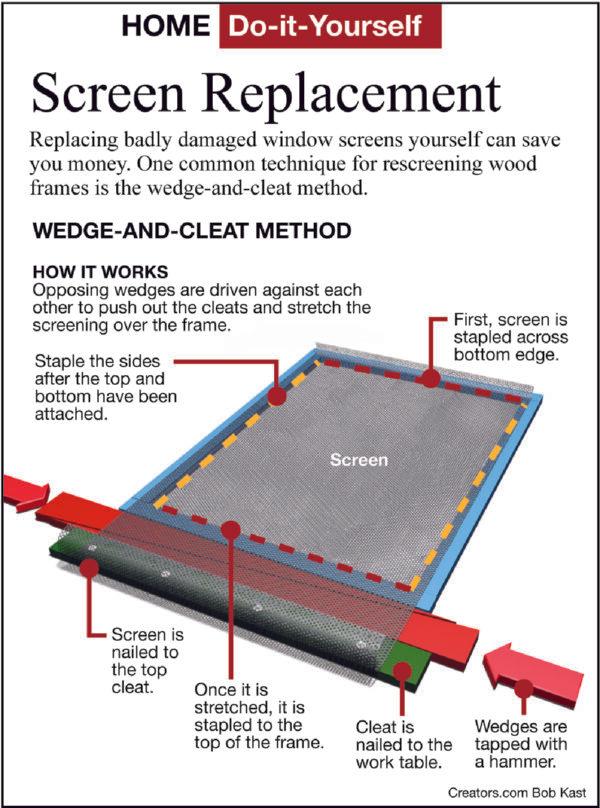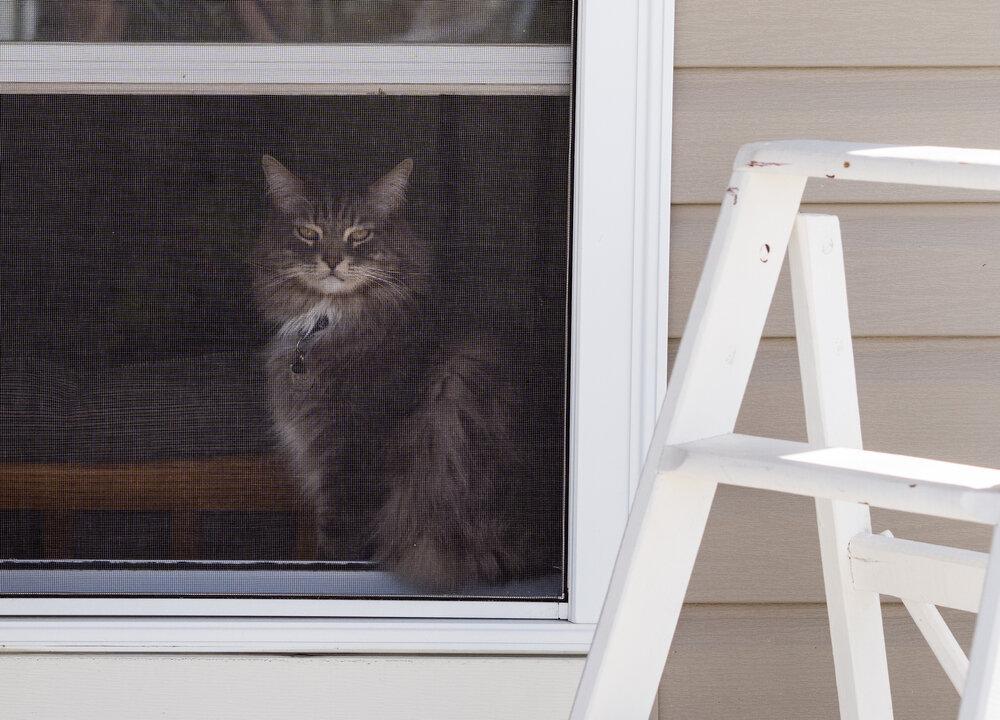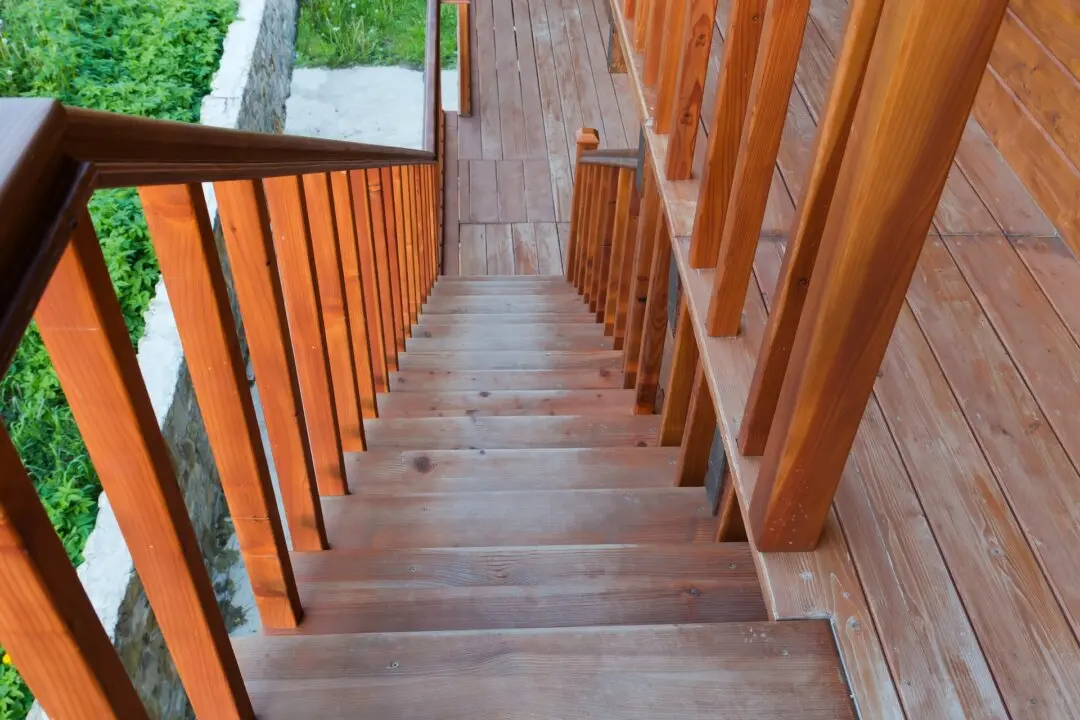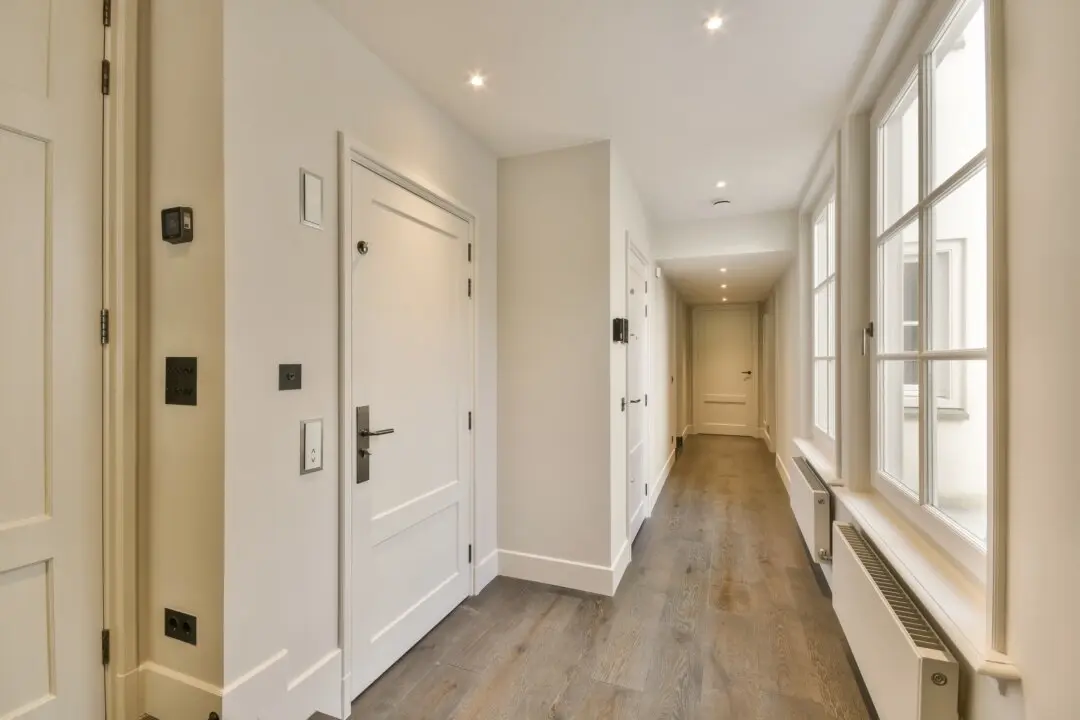Dear James: My cats and kids have damaged many window screens. Some have small holes, and others are torn. Is it difficult to repair the screening, or should they be replaced? -- Anderson H.
Dear Anderson: Repairing or replacing a damaged screen is an important home maintenance item. Don’t skip repairing tiny holes, because insects such as mosquitoes will search and find the hole to get indoors. Good screening is stretched taut. When it gets damaged, it looks bad and loose.
Most home-center and hardware stores provide screen-repair services. They usually install entirely new screening into the old frame or replace the entire unit with a custom-sized one. This can be quite expensive when you have to repair many screens. Hopefully, you can get a quantity discount.
It isn’t difficult to repair most screen problems yourself, and you can save a bundle. If some of your screens have just a couple of tiny holes that mosquitoes get through, put a dab of clear epoxy over the holes. Since strength isn’t an issue, select a fast-drying type to make the job easier. Once it sets up, the spots will be barely noticeable.
For larger holes up to 2 inches across, purchase a screen patch for an easy, permanent repair. Select a patch piece that is at least 1 inch larger than the hole. Try to match the weave and fabric weight as closely as possible. This type of repair will be noticeable, so it is best for windows facing the backyard.
Most patches have a screen center with open strands protruding from all four sides. The patch is placed over the hole, and the open strands are woven into the existing screen. If you have trouble finding a patch to match, sacrifice one of your old damaged screens and use its screen fabric to make patches for the other screens.
If the screen is rusted or badly damaged in your old steel screen frames, you should replace the entire screen frame. The screen in wood or vinyl frames can be replaced. To make it look like a professional rescreening job, the screening must be stretched tightly, yet evenly. When done properly, a penny should bounce when dropped on the horizontal screen.
The two most common methods for rescreening wood frames are the wedge-and-cleat and the bow methods. The former is best for medium-sized windows, and the latter is best for large windows or doors.
Using the wedge-and-cleat method, a piece of screening larger than the frame is needed. The screening is nailed to cleats on a worktable. Opposing wedges are driven against each other to push out the cleats and stretch the screening over the frame. Once it is stretched, it is stapled to the frame.
The bow method uses spacers underneath the large frame to bow it. The screening is stapled to the opposing ends of the frame. When the frame straightens, the screening is stretched. The same is done across the other two ends.
Screening in vinyl frames is easy to replace. A flexible bead forced into a groove with the screening holds it in place. Remove the bead and the old screening. Place the new screening over the frame, and force the bead into the groove to stretch it and hold it in place.

Send your questions to Here’s How, 6906 Royalgreen Dr., Cincinnati, OH 45244, or visit Dulley.com. To find out more about James Dulley and read features by other Creators Syndicate writers and cartoonists, visit the Creators Syndicate website at Creators.com. Copyright 2020 Creators.com





